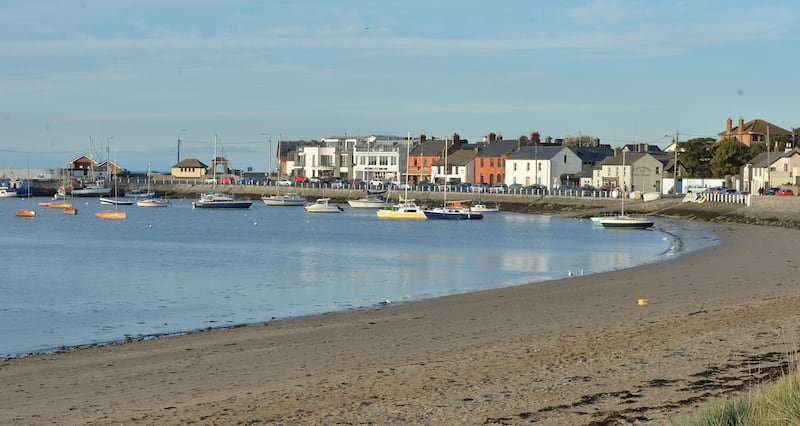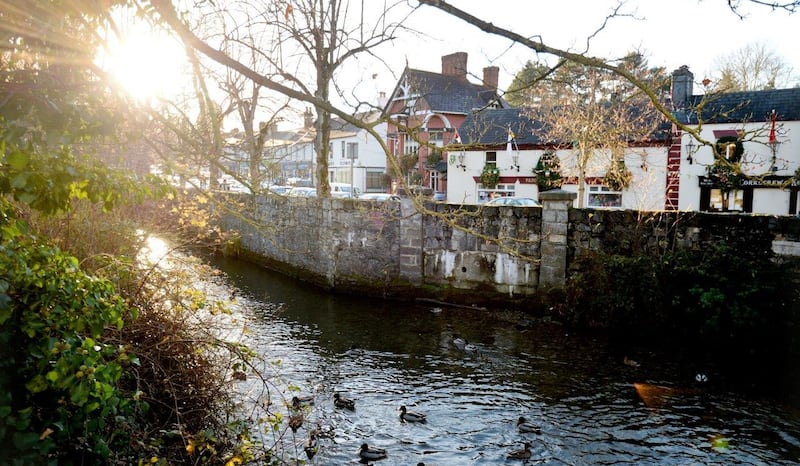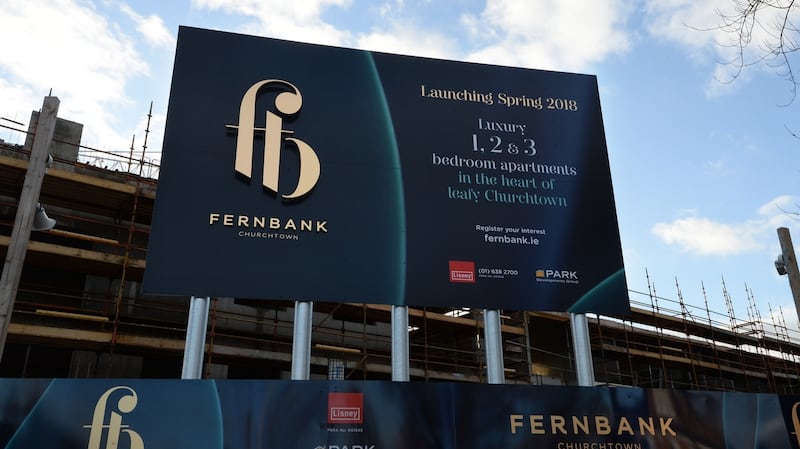A month into 2019 and the new homes market is gearing up for a busy year. The latest housing survey from Goodbody estimates that 18,855 new dwellings were completed in Ireland last year, marking an annual growth rate of 31 per cent for the full year and the largest annual output since 2009. Specifically, it noted an increase of 45 per cent in large new schemes of homes, the bulk of these in Dublin.
This is all good news given the often-cited figure of 35,000 new homes required annually to meet demand, and if planning applications are a further indicator the figures are encouraging. The latest report from Davy Stockbrokers and myhome.ie noted that new planning permissions had been granted for 29,500 units in 2018 – 70 per cent higher than the current level of homebuilding – and the majority of these were for large new homes schemes, mainly in Dublin.
Specifically, planning applications for apartments have risen by 167 per cent in the 12 months to the third quarter of 2018, Goodbody noted. So after years of waiting the trickle of new homes has turned to a flow. The question is for who? And where?





The emergence almost overnight of a booming private rented sector, where apartment blocks are purpose-built for big institutional investors to let over the long term, means the bulk of new apartments coming on stream in city hotspots will never be bought by individual punters. That starter pad for twentysomething professionals in the Docklands is likely to become a thing of the past.
Even beyond the city centre, two hotly anticipated suburban apartment schemes of recent months have also been effectively removed from the open market prior to launch. Last May, Irish Life Investments Managers purchased Park Development's 262-unit Fernbank scheme in Churchtown, Dublin, for more than €100 million.
And more recently, publicly-quoted builder Glenveagh has indicated that it will ideally sell its Herbert Hill development of 90 apartments in Dundrum, Dublin, to a single institutional buyer. Of course the argument can be made that it’s about time this model was applied in Ireland, and we move away from a national obsession with individual home ownership. But when we see increased volumes of new units being built they will not all be available for individual purchase.
The various new homes schemes coming on stream this year suggest a huge amount of activity. But it’s worth looking too at the volumes of stock being built, and price points.
Building costs and access to finance clearly remain a major issue for developers, as new launches and subsequent phases are frequently limited to less than 20 houses – even in very large developments. It is clear that financial backers are erring on the side of caution, an indicator of how price sensitive the new homes market is.
Early projections
Larger developers who were first out of the traps in recent years would have based early projections on galloping double-digit growth as supply struggled to meet demand.
But the Central Bank’s mortgage lending restrictions and their alarmingly swift impact on house price growth makes some of those early prices look a lot less competitive, in particular as other developments have come on stream and greater choice enters the equation.
This may be a challenge for developers as we move towards a buyer’s market and more second-hand properties also come on stream. Prices in prime locations around the city are set high – site and build costs remain high – and in most cases are beyond the budgets of the traditional first-time buyer.

Expect most activity in these areas to remain at the luxury end or to be single-lot private rented sector sales or student accommodation schemes.
The new Land Development Agency announced last September promises to free up 30 land banks around the capital for delivery of 150,000 new homes over 20 years. But the first units won’t be built until 2020, and the fact that they will be delivered in most cases by private sector developers raises little hope that these will be truly affordable city centre homes for buyers.
The Banking & Payments Federation Ireland’s most recent Housing Market Monitor for the third quarter of 2018 showed a widening of the price inflation gap between Dublin and the rest of Ireland.
This is reflected in a clear rise in first-time buyer activity and demand in the more affordable commuter counties of Kildare, Wicklow, Meath and Louth. And there has also been a marked increase in new homes activity in the regions, in particular in Cork, Limerick and Galway.
Agents are citing a definite surge in interest as first-time buyers rush to avail of the Help to Buy scheme before the window to apply shuts in December. There has been much speculation the scheme will be extended, but Minister for Finance Paschal Donohoe has made it clear any decision to grant an extension will only be made in Budget 2020 next October.
Meanwhile, developers and builders are hoping to make hay in the starter homes market, where these buyers stand to gain most from the initiative. The launch of a €750 million State loans scheme is likely to provide a shot in the arm to small- and medium-sized developers who until now could not raise funding from banks or other lenders due to prohibitive interest rates and terms. It is expected more than 7,500 new homes will be built over the next five years on foot of the scheme.
Once approved, these developments (which range in size between 10 and 200 homes) should hit the ground running, as a developer will need to have already secured or submitted planning permission for a project.
Greatest demand
Concerns have been raised by the Society of Chartered Surveyors Ireland that the scheme will not apply to the building of new apartments where its research anticipates there will be greatest demand next year for one- and two-bed apartments. Instead the funding model is more likely to apply to homes costing €200,000 to build, typically three-bed semis outside of Dublin.
The new homes sector is into recovery mode and fast-track planning will hopefully accelerate delivery. The greatest concern is that adequate provision will be made to ensure the units coming on stream are affordable and located in well serviced areas to meet the needs of young families and buyers, and not skewed towards the needs of big business.






















